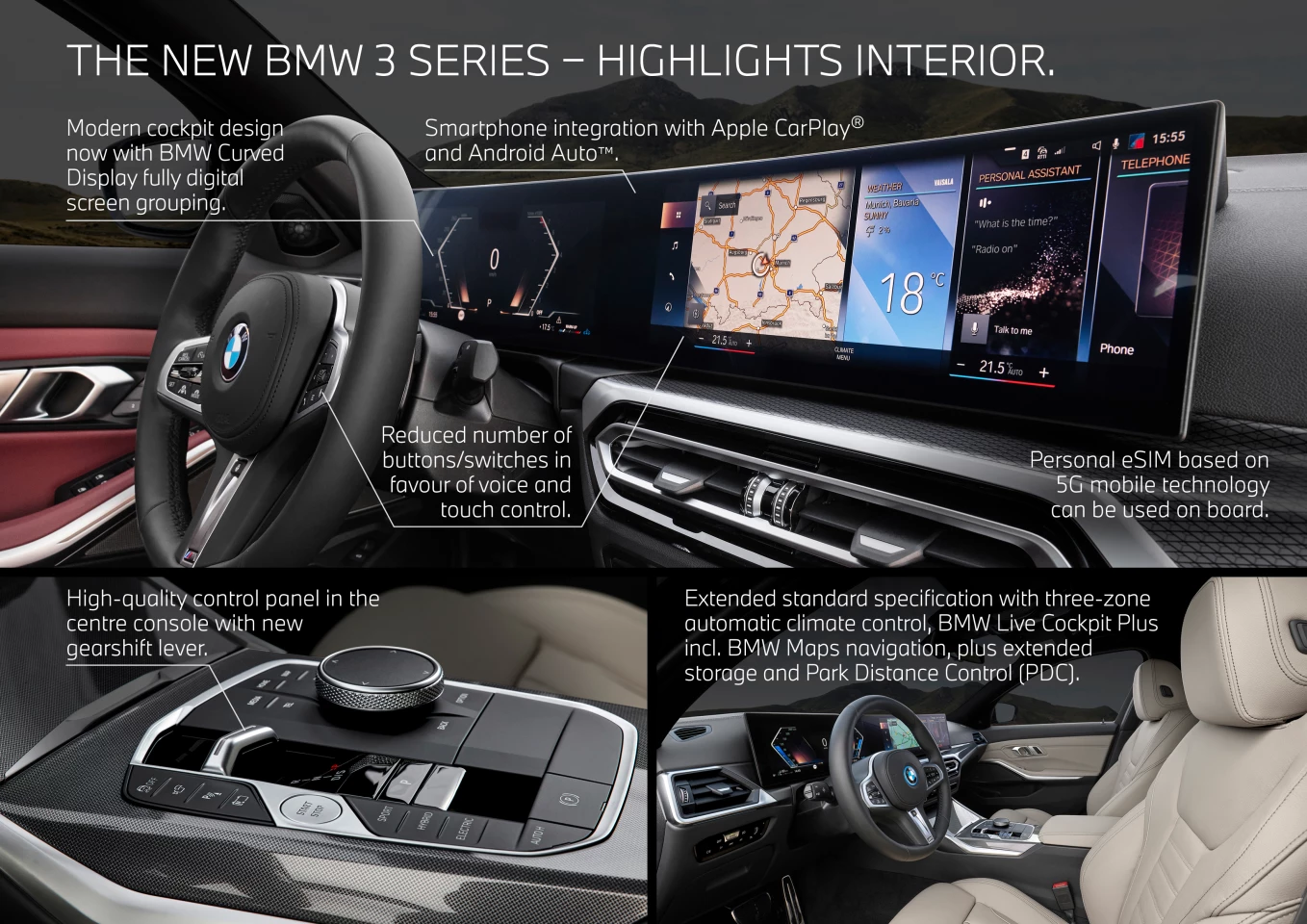BMW updated the styling for the 3 Series for the 2023 model year, carrying forward with the seventh generation of the 3, which entered the market in 2019. The updates, happily, didn’t include a widening of the beaver tooth or a nerfing of the M model.
At a Glance
- Body updates are minimal and nicely done
- Interior upgrades are plentiful and focus on the infotainment
- Drive quality and engagement is good
- Aged compared to rivals, but still competitive
Most of the changes for the upgraded 3 Series are in slight fascia changes and a changing of the infotainment system. Exterior changes include a slightly wider grille, a less complicated headlamp cluster, and sharper angles at the edges of the bumpers. Inside, the instrument cluster enters a single housing for better visibility and the touchscreen gets slightly larger as fewer buttons adorn the dashboard. BMW also added updates to the voice-activated Intelligent Personal Assistant for more functionality.

The digital instrument cluster is now 12.3 inches and shares a sort of curved overall housing with the 14.9-in infotainment screen. This makes them appear to be one large, integrated screen across the left two-thirds of the dash. In actuality, it’s two screens that just appear to be melded. The curve, however, means that the instrument cluster is a little more visible in this larger size and the infotainment screen is more than double the size it was before.
New features include everything in BMW’s new iDrive 8 system. Which means a more casual voice-controlled system and a lot of useful functionality like preset buttons that can be preset for almost anything. They can be for radio stations, navigation points, phone numbers, or any combination. The added room in the center console for this and the accompanying (optional use) command knob comes thanks to the removal of the shift knob. It’s now buttons, bringing the 3 Series in line with the rest of the BMW lineup, which has moved to button-type shifting in this current generation.
The new 3 Series comes in three small luxury sedan configurations. The base model is the 330i followed by the 330e and the M340i. We drove the latter, which has an upgraded engine and more sport-oriented amenities. The standard engine in the 3 Series is a turbocharged four-cylinder that makes 255 horsepower (190 kW) to an eight-speed automatic transmission in rear-wheel drive. All-wheel drive is an option. The 330e model adds a plug-in hybrid system with about 22 miles of all-electric driving.
The M340i is the sport-oriented version of this small luxury sedan. It swaps the four-cylinder for a turbocharged six-cylinder that outputs 382 horsepower (285 kW). It also brings larger wheels, an aerodynamics kit, an M Sport suspension, rear differential, and braking setup, and an integrated rear spoiler. This improves 0-60 mph (0-92 km/h) sprint times from about 5.7 seconds in the base model to less than five seconds for the M340i.
As with most BMW models, handling in the 2023 M340i is very good and the interior is quiet and smooth. The road isn’t erased from the experience, just softened so it’s less jarring. The M340i feels good to drive and combines what most BMW buyers would expect in terms of comfort, luxury, and sportiness.
The new technology interfaces are the big changes this year. The bigger screen and functions moving from the dash to the screen are a big change for BMW. The voice system, while far better in understanding and capability than its previous generation, is still a little clunky. There’s no personality at all, with no Easter eggs we could find and no functions beyond the basic “tune the radio to this” or “navigate to there.” It can do several things, but most of them will not be the kinds of things one would do while on the go. Comfort settings, for example, are usually “set and forget” for most of us. Drive modes are a more tactile thing we’re more likely to flip a switch for (which is available near the gear shift buttons) than ask for. And few are going to change the radio volume by asking for it when a quick hand gesture or flick of a knob (included) will do it better.

But the technologies in the new BMW 3 Series are better at hearing commands and responding accordingly. The lag time of the previous generation is largely gone and responses are much quicker as a result. The larger screen is much clearer and easier to use as well. In the end, though, BMW is still playing catchup to chief rival Mercedes-Benz when it comes to voice-enabled infotainment.
The 2023 BMW M340i is aged compared to other small luxury sedan options on the market. It is not, however, behind those other options. In terms of drive and appeal, the 3 Series holds it own well. It’s just the details that make the laugh lines for this one.
The 2023 BMW 330i starts at about US$43,300 while the M340i model starts at around $58,000.
Product Page: 2023 BMW M340i














